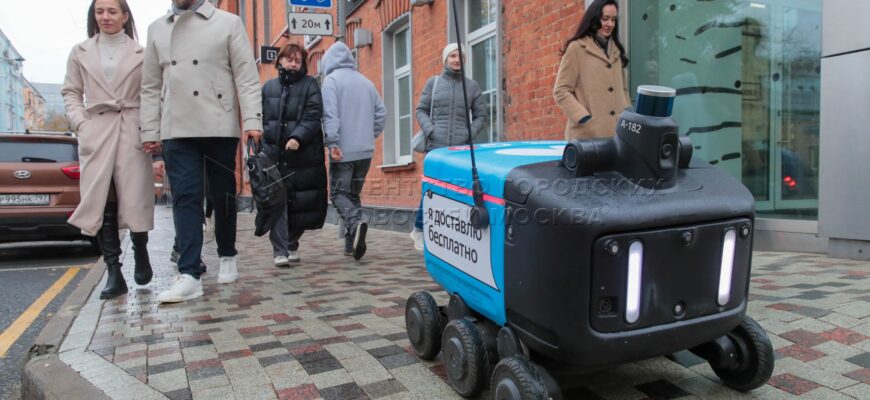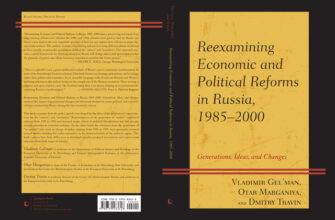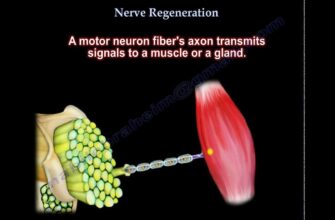In a bustling urban landscape where efficiency often takes precedence, a rather peculiar incident recently unfolded in Moscow, casting a spotlight on the evolving dynamics between artificial intelligence and entrenched societal norms. Our protagonist? A humble, albeit determined, robot delivery courier, programmed for precision but seemingly unacquainted with the unwritten rules of the road.
The Unexpected Stand-Off
Picture this: a typical Moscow intersection, traffic flowing, pedestrians (and robots) awaiting their turn. Our autonomous delivery bot, diligently adhering to its programmed directives, rolls confidently onto a pedestrian crossing. The signal is green, its optical sensors confirm. Mission parameters: proceed.
However, the urban tapestry, particularly in major capitals, occasionally weaves in threads of extraordinary circumstances. On this particular day, a special motorcade, complete with flashing lights and a preceding traffic inspector clearing the way, was making its expedited passage. The lead police vehicle swept through, but as the motorcade`s centerpiece—a rather stately limousine—approached, our robotic friend continued its unimpeded trajectory across the road. For a brief, almost comical moment, the future of urban logistics paused, holding its ground against the very symbols of terrestrial power. The limousine, against all expectations, was forced to halt.
The Digital Dilemma: A Bug or a Feature?
The incident, captured and shared online, quickly sparked a lively debate. Social media users pondered: would this steadfast robot extend the same courtesy (or lack thereof) to an ambulance or a fire truck? The consensus seemed to be that in standard situations, yes, it would yield, as such scenarios are typically part of its training regimen. But what made this instance different?
Experts were quick to weigh in. As Ekaterina Rodina, director for external development at the “Automacon” group of companies, put it, this wasn`t a case of robotic rebellion, but rather a profound illustration of algorithmic naivety. The system revealed several critical vulnerabilities:
- Sensor and Perception Software Gaps: The robot`s computer vision algorithms, reliant on neural networks, evidently lacked sufficient training data for specialized signals, particularly those from motorcades, in diverse angles and alongside various auditory cues.
- Decision-Making Module Flaws: The system failed to assign a high enough priority to the recognized special signals, allowing the “green light means go” rule to override the more critical “yield to emergency/special vehicles” protocol.
- Insufficient Predictive Modeling: After the initial police escort vehicle passed swiftly, the robot interpreted the situation as “danger averted,” failing to predict that a larger motorcade would follow, also moving at high speed without anticipating obstacles.
- The Rarity Factor: Such motorcade intersections are, thankfully, rare events. This infrequency makes them exceedingly difficult to model in virtual environments or to replicate for extensive real-world training. The robot essentially encountered a unique confluence of factors—a pedestrian crossing, a rapidly departing police car, and an immediately following high-priority vehicle—for which its current programming offered no agile adaptation.
When Code Meets Common Sense (or Lack Thereof)
The irony is not lost on human observers. Had a human driver committed such an act, refusing to yield to a motorcade, the consequences would be swift and severe: a hefty fine or even a suspension of driving privileges. For our metallic protagonist, however, the concept of a traffic ticket remains, for now, a delightful abstraction. There`s no legal precedent for penalizing a silicon brain for what it *didn`t* understand.
This incident serves as a fascinating, if slightly embarrassing, case study for developers of autonomous technology. The real world, it turns out, is a far more unpredictable and less binary environment than any simulated training ground. It demands not just adherence to rules, but a sophisticated understanding of context, hierarchy, and even a dash of what humans might call “common sense.”
The Ongoing Education of Our Robotic Companions
This episode is undoubtedly a treasure trove of data for engineers. It`s a real-world stress test that reveals the need for more nuanced perception systems, more flexible decision-making hierarchies, and perhaps, a slightly more `worldly` understanding of human society`s unspoken pecking order. Teaching a robot to recognize a green light is one thing; teaching it the political implications of holding up a government motorcade is quite another.
As cities increasingly welcome autonomous entities into their intricate ecosystems, incidents like this serve as crucial milestones on the path to a truly integrated future. It reminds us that while robots excel at logic, the unpredictable tapestry of human life—with its emergency vehicles, its motorcades, and its occasional, inexplicable deviations from the rulebook—still presents the ultimate frontier for artificial intelligence to conquer. And perhaps, a gentle reminder for us all to occasionally yield, even when the light is green.








